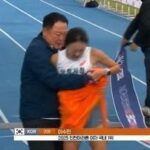The first satellite launched last year passes over the Korean Peninsula twice a day while orbiting a sun-synchronous orbit that constantly maintains the same angle with the sun. During the day, it takes photos using visible light; at night, it uses infrared sensors. This is an electro-optical/infrared (EO/IR) satellite. The EO equipment of the first satellite can secure clear images, but it is limited in taking pictures on days with a lot of clouds.
The second satellite can take pictures of the Korean Peninsula 4-6 times a day. Unlike the first satellite, it can capture images regardless of the time of day, weather conditions, or cloud cover. The resolution of this satellite is so high that it can identify objects on the ground as small as 12 inches, also known as the 0.3m class. This second reconnaissance satellite has a high-performance imaging radar (SAR) that can capture images in all weather conditions, day or night. It is expected to conduct North Korean surveillance and reconnaissance missions after several months of operational testing and evaluation.
The Ministry of National Defense said, “With the successful launch this time, our military’s independent information surveillance reconnaissance capability has been further strengthened through the first SAR (imaging radar) satellite,” and added, “We will continue to push for the launch of subsequent satellites without interruption.”
Operating a total of about 30 small cluster satellites
The military authorities plan to launch three additional SAR satellites by 2025, securing five reconnaissance satellites. Once the five reconnaissance satellites are operational, they can monitor movements such as North Korean missile launch vehicles (TEL), troop movements, and North Korean command lines every two hours.
The Ministry of National Defense is also pushing for a plan to launch a total of about 30 small cluster reconnaissance satellites with a resolution of 39 inches into a 317-mile Earth orbit to fill the two-hour surveillance gap of the 425 satellites. An official from Hanwha Systems, a participating organization, said, “Although the resolution of the 425 satellites is high, there will inevitably be a real-time surveillance gap due to the characteristic of orbiting the Earth’s low orbit more than 14 times a day. This gap can be largely filled with small cluster reconnaissance satellites.”
South Korea has a multi-purpose satellite called Arirang 3, which is not a spy satellite but is used for practical purposes. It has a high resolution of 28 inches. In addition to military reconnaissance satellites, South Korea operates this satellite. Hwang Jin Young, a senior researcher at the Aerospace Research Institute, predicted that future military reconnaissance satellites would evolve by improving camera resolution and real-time surveillance through large-scale cluster satellites. This would allow them to complement each other and enhance their effectiveness. It is interesting to consider how far reconnaissance satellites can evolve in the future.















Most Commented